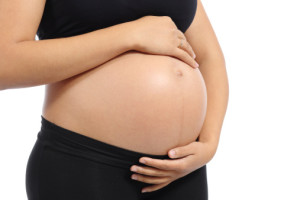Family Medicine Practitioners Push for Natural Deliveries Despite VBAC Birth Injury Risk
For many women, the recovery period following a vaginal birth – as opposed to a Caesarian Section delivery – is markedly shorter, allowing for a quicker bounce back from the physician trauma of childbirth. For this reason, as well as many others, women having endured a Caesarian Section delivery may opt for a vaginal birth following subsequent pregnancies – a process known as Vaginal Birth After Caesarian (VBAC).
There are a number of health benefits to a VBAC, as well as several risks inherent in this childbirth option. Nonetheless, in an article published in the January/February 2015 of the Annals of Family Medicine, practitioners continue to encourage women to take the VBAC route, touting its safety and efficiency.
Details of VBAC article
Leading with the troubling American Caesarian Section delivery rate of one in three – which is disproportionate as compared with most other industrialized nations, the article explains that with proper planning and patient involvement, a VBAC can be a safe and low-risk childbirth option for many women.
The American Academy of Family Physicians highlighted the following key points as relating to VBAC procedures:
- Clinicians should encourage and counsel women to pursue the VBAC option after offering full disclosure on the risks and benefits.
- Clinicians should inform women who have had both vaginal and Caesarian births in the past that a VBAC will very likely be successful given the patient’s history.
- Clinicians should also engage in the induction of labor if necessary, particularly if the woman has endured a labor induction in the past.
In sum, the article seeks to inform clinicians that VBACs are possible with the proper amount of pre-planning. What’s more, VBACs are thought to reduce the instance of medical problems associated with repeated Caesarian deliveries, including placental abnormalities, hysterectomy and infection at the incision site.
VBAC birth injury risk
VBAC childbirth is not without risk, despite the high praises of the American Association of Family Physicians. According to recommendations set forth by the American Congress of Obstetricians and Gynecologists, women considering VBAC should only do so in a facility equipped with the proper anesthetics to handle an emergency Caesarian section. What’s more, the procedure carries a 0.8 percent chance of causing uterine rupture, which can lead to serious childbirth injuries for the baby.
Uterine rupture can lead to immediate and potentially-fatal fetal distress. Without proper monitoring, children engaged in the birth canal can be deprived of vital oxygen and blood flow for an extended period of time, causing permanent brain damage. This uterine rupture, which occurs when the old Caesarian scar is reopened during birth, can also cause catastrophic injuries for the mother during the childbirth process. As clinicians are encouraged to offer women the VBAC procedure, so too are they encouraged to watch for the early warning signs of uterine rupture, including abrupt cessation of contractions, vaginal bleeding, fetal heart rate changes, and localized pain near the uterine scar.
- doctorslounge.com, AAFP advocates for planned vaginal birth after Caesarian, http://www.doctorslounge.com/index.php/news/pb/52633
- ANNFAMMED.org, Labor after Caesarian, http://annfammed.org/content/13/1/80.full


 Resources
Resources
 Resources
Resources

